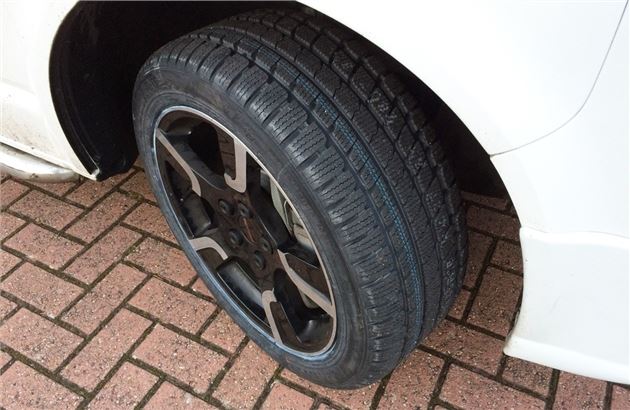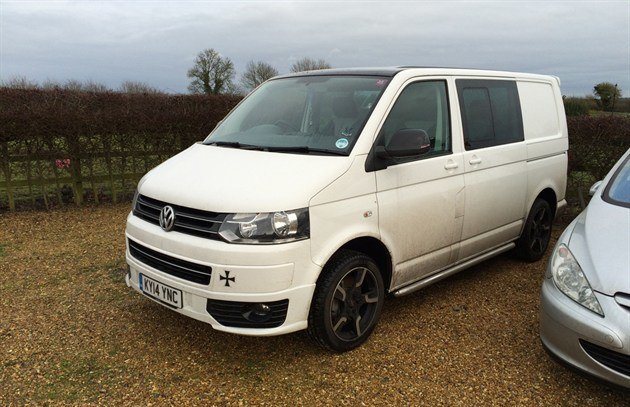Our Vans: Volkswagen T5 Transporter Kombi Sportline


5 December 2014: Transporter gets its winter tyres fitted
The Details
| Current mileage | 5866 |
|---|---|
| Claimed economy | 37.2mpg |
| Actual economy | 32.9mpg |
The end of 2014 seems to have crept up on me this year. Usually I'm pretty organised when it comes to Christmas but this year things have gone awry. Maybe it's been the unusually mild autumn but somehow December is already here and with only a few weeks to go until Christmas I'm not at all prepared.
And that goes for the Transporter too. I've not been a very good boy as I've left it very late to sort out winter tyres for the van. And with cold weather expected over December and lots of travelling to do, I don't want to be caught out. Luckily, Volkswagen have helped by find some suitable tyres for the Transporter so off come the summer Continental ContiSportContact 5 tyres to be replaced by some Kumho Izen KW27 tyres.
I was expecting to be running different wheels too, but the Kumho tyres fitted on the big 18-inch wheels of the Sportline, so I get to keep the same alloys. Whether that's a good thing depends on how you look at it. Yes, the van still looks great, but it does mean that it's not as easy to swap back to the summers. Personally, I'd prefer two sets of wheels and tyres.
I call them winter tyres but many people are starting to refer to them as 'cold weather' tyres and that makes a lot more sense. While they're specially designed to cope with snow and ice, they're actually more effective than a standard summer tyre at anything below 7C. It’s all to do with the compound of the tyre. Cold weather tyres have a higher ratio of natural rubber and silica in the compound which doesn't stiffen up as much as synthetic rubber in cold conditions. Therefore the tyre is more flexible and able to perform like a tyre should. Summer tyres simply go hard in the cold temperatures.

It's not the first time I've fitted winter tyres. In fact this will be the fourth year. I'm a convert having experienced the difference between a summer tyre and a winter tyre, not just in snow but in cold conditions. The extra security and shorter stopping distances could be the difference between having an accident and not. For me it's a no brainer.
What surprises me is that they haven't become more popular with the British public. Considering how the UK tends to grind to a halt at the merest hint of snow and ice, I'd expect more people to be choosing to run winter tyres. Indeed in many European countries it's the law.
Last year I fitted winter tyres to the Lexus GS450h and apart from an improvement in ride comfort, there was little difference. That's not the case with the Transporter though. With its extra weight and bulk you can feel a huge difference on the Kumho tyres. The steering is very light and there's less grip in corners. It also tends to struggle for traction if you accelerate hard without a load on board.
Having got so used to the immense grip from the Continental tyres, it's been quite a change going onto the Kumho winters. Of course, they will be much better if it snows or sleets, it's just at the moment the Transporter feels quite light on its toes compared to its usual planted feel. It's something I'm sure I'll quickly get used to.
« Earlier: Transporter Kombi or Caravelle Later: Perfectly practical in every way? »













